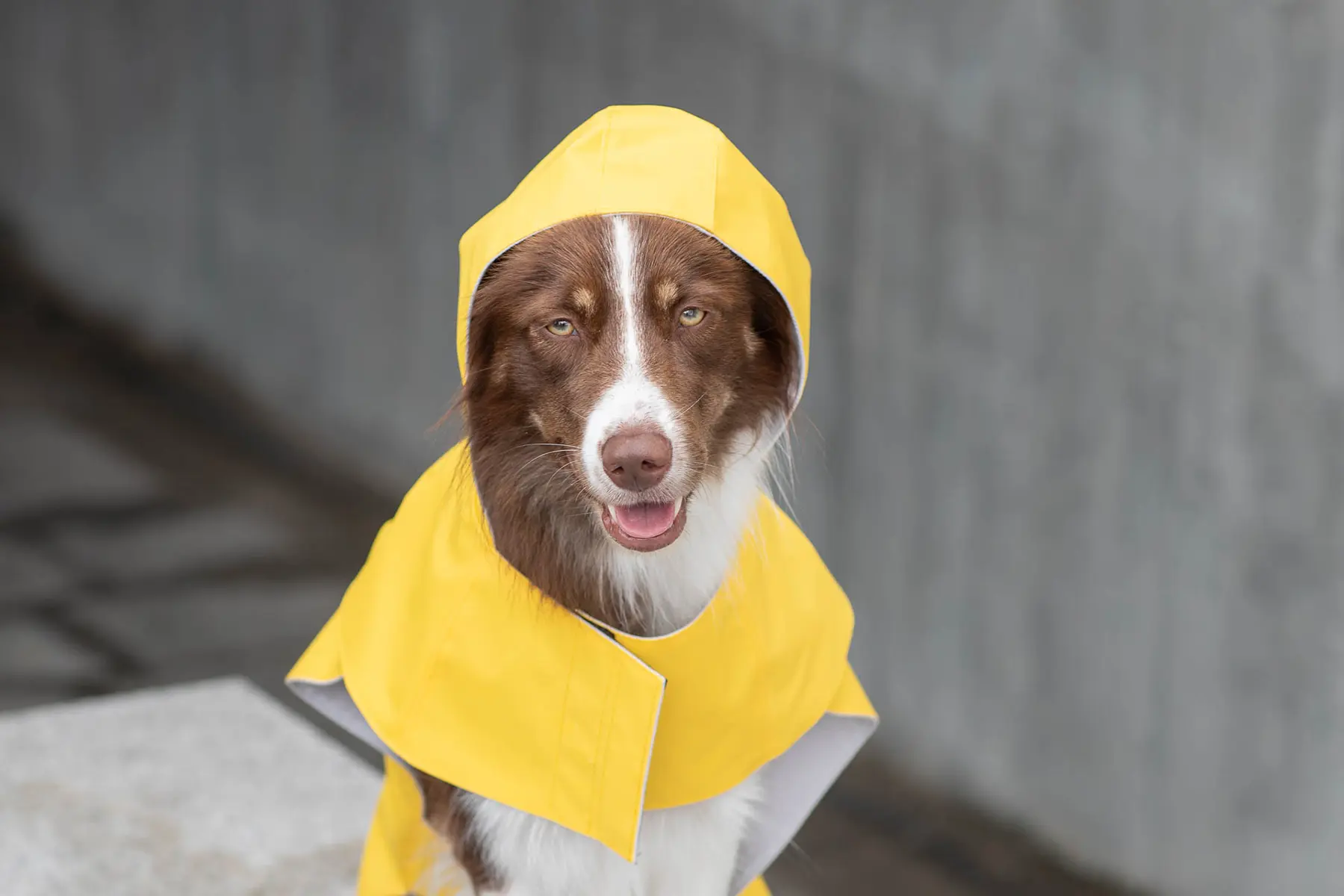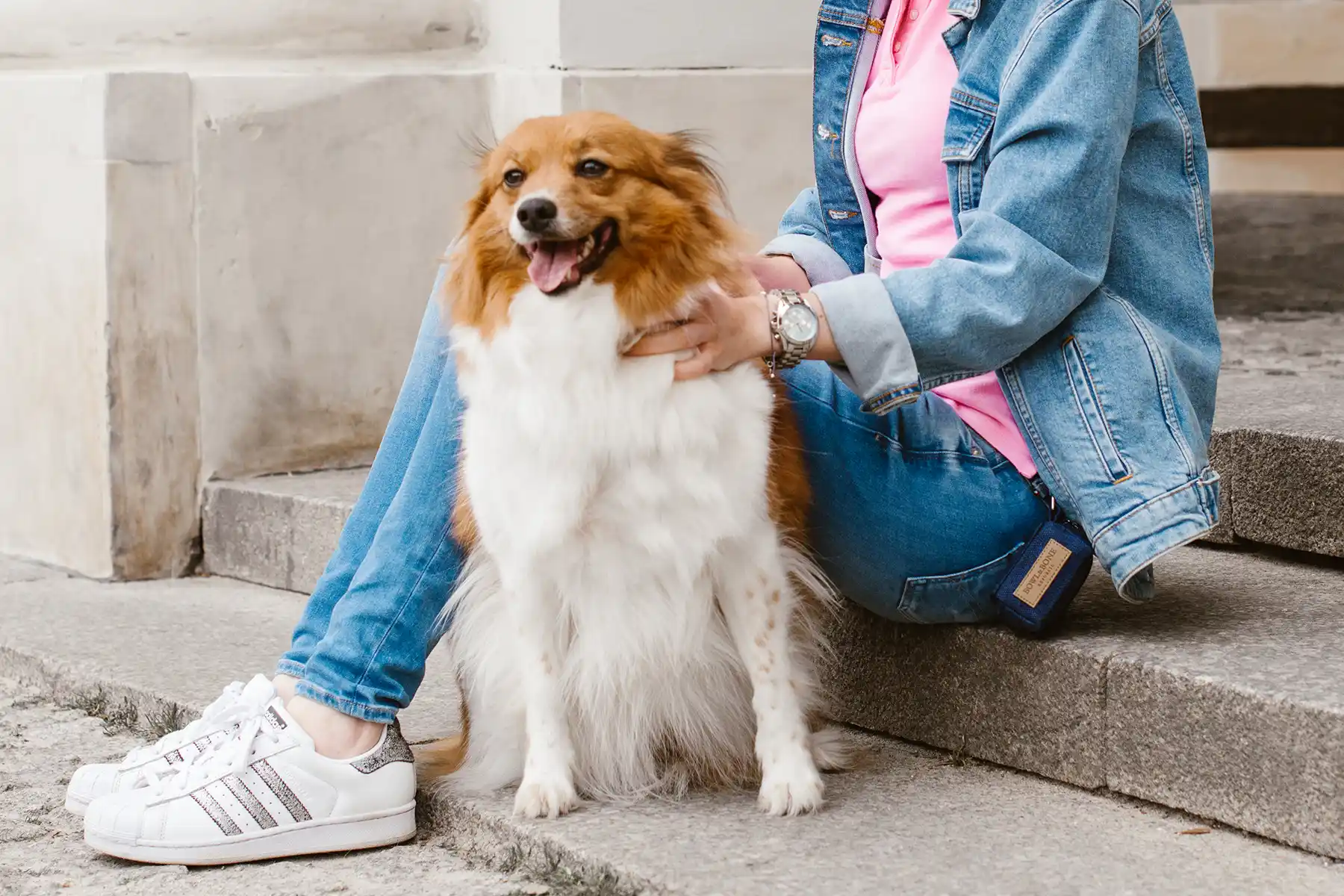
A winter walk with a dog is a pleasure
Winter is the time of the year that half of us love, and the other half would rather spend at home under a warm blanket with a cup of hot tea. For some, winter walks in snow-covered alleys where everything around is covered with white fluff, and the cold air tingles on their cheeks is a magical moment that they wait for all year.
When preparing for the winter season, let’s not forget about our four-legged friends. A winter walk with your dog requires proper preparation. Dogs, just like people, need protection against frost, snow and low temperatures. Many dogs take winter very badly, and walks at this time of the year are extremely unpleasant for them. Careful observation of your dog’s behaviour during winter walks will allow you to assess its tolerance to low temperatures. Dogs clearly communicate the discomfort they experience by spending time outside in the cold air.
How can a dog communicate that he is cold?
Dogs, just like people, are vulnerable to heat loss and hypothermia on cold days. Observation of your pet’s behaviour is the first thing to keep in mind during winter walks. Dogs can inform us that they feel discomfort caused by the cold through their behaviour and by sending out a variety of different signals.
The most obvious signal sent by dogs that have been out too long in the cold is trembling and shaking. Dogs’ bodies, like ours, try to deal with the cold in this way. Tremors are a protective mechanism against cooling through which heat is released from muscle tissue. If you notice that your dog begins to shake during a walk together, then you should take him home as soon as possible.
During winter walks, your dog may suddenly stop, not wanting to go further. This is a clear sign that the outside temperature is too low for him. Unfortunately, this behaviour is often ignored by dog owners –especially if the dog is notorious for being fussy during walks.
In winter, although park pathways are usually cleared of snow, the lawns on which our dogs are usually strolling are covered with a blanket of fluffy powder. Many dogs love to play in the snow, but staying too long in this icy wonderland makes their paws freeze. The moment when contact with snow becomes unpleasant for your pup, can be recognized by observing his behaviour. Your dog will lift up his feet to avoid direct contact with the cold ground. In this circumstance, your dog will always hold up one paw. This behaviour can also be a reaction to salt, which is sprinkled on streets and sidewalks in the winter. Salt can bite into the pillows on the inside of your dog’s paws, causing him pain and discomfort.
How to prepare a dog for winter walks?
As guardians of our pets, we are responsible for their health and happiness. Dogs need our help to protect themselves from frost and cold temperatures. You can keep your dog from freezing in several ways:
Dog clothes
Of course, not every dog needs clothes in order to stay warm on a winter walk. It all depends on the breed and age of your pet. When choosing the right dog clothes, pay attention to the comfort of your dog. Under no circumstances should the clothing restrict the movements of your pup.
Bowl&Bone Republic has a large assortment of dog sweaters and jackets that are both comfortable and stylish. Their carefully thought-out cuts, complete with the highest quality materials, will provide warmth to any dog. If your pet does not like clothes, a warmed-up harness is a good idea. The YETI dog harness model from Bowl&Bone Republic combines functionality with additional protection against the cold.
You must put aside all metal elements
During winter, accessories for dogs made entirely of metal, such as a collar with chains should be set aside until the warmer days of spring. In the cold, metal lowers its temperature greatly, becoming icy to the touch. Extended contact between the metal chain of the collar and a dog’s skin may cause him great discomfort and even lead to frostbite.
The right diet
During winter, a dog’s diet should also change. In winter, our body needs different ingredients than in the summer. There are several important aspects to consider when choosing the right food for your dog.
The lifestyle of your pet is of great importance when considering its winter diet. If your dog is a typical couch lover, the restriction of movement resulting from shorter walks on cold days may result in your dog becoming overweight. If you notice that your pet is gaining weight during the winter, temporarily exchange its typical food for something with less concentrated energy. Of course, you should not be overly concerned about your dog’s weight. Light weight gain is very normal in winter.
During the colder months, pooches have a slightly faster metabolism. Their bodies need more energy to warm up. A good source of essential fats and protein is meat. Therefore, in the winter it is worth reducing the portion of carbohydrates given to dogs in the form of rice or pasta in favour of more meat. In addition, as a daily supplement to his diet, you can give your dog a teaspoon of oil or olive. It will help your dog’s body strengthen the coat that protects him from cold and chill.
Winter fun in the snow with a dog
During winter walks with your dog, you should not avoid physical activity. Having fun together outside can be as pleasant during the winter as it is on warm summer days. Choose games that require a lot of movement to help your dog maintain a high level of body heat.
Frisbee, or playing fetch is great fun on winter days, just make sure that your dog toy does not get lost in the snow. If you don’t have a toy at hand, you can try to throw snowballs for your dog instead. In winter, don’t give up running together either. Just remember to choose routes that are not icy, to avoid unwanted injury.
Winter walk in moderation
Let’s face the truth, if your dog is not a snow breed, then walks that are too long in cold weather can really make him tired. Even if your dog has received excellent preparation for being outdoors at low temperatures, this will only be effective for a while. Therefore, remember to use caution during winter walks with your dog. Please don’t give up on walking, just maybe skip your favourite long evening walks.
In the winter, remember that the risk of your dog getting a cold is very high. A frequent cause of disease is sudden temperature change. The exit from a very warm home to the freezing air is, unfortunately, a great time for your pet to catch an unwanted illness. If you want to lower the risk of your dog getting sick, be careful not to overheat your home or your car while driving with your pet. If you know in advance that you will have to spend a longer time with your dog outside in the cold air, lower the temperature in your home by a few degrees. By doing this, your dog’s body will not experience such a huge shock when it goes out into the cold.
When leaving for a winter walk with your dog, take a thermos of warm water with you. Your dog should not drink cold water from dissolved snow. It is definitely too cold and can cause your pup to catch a cold.












